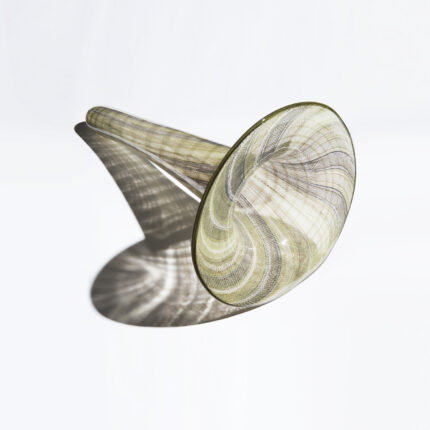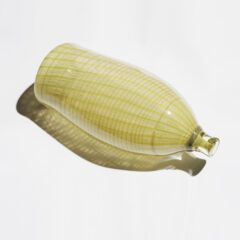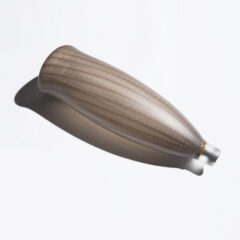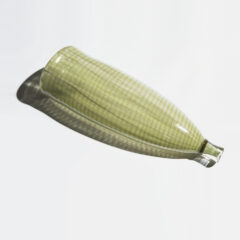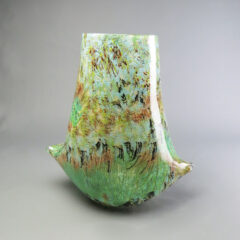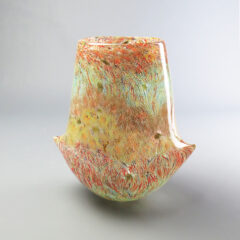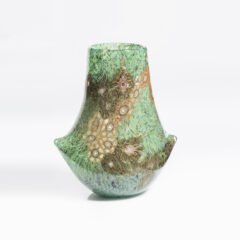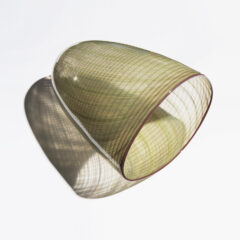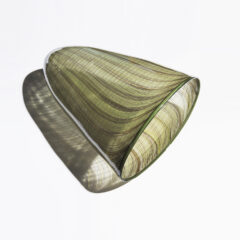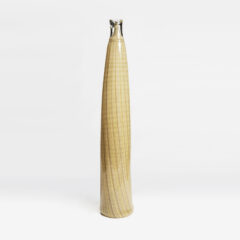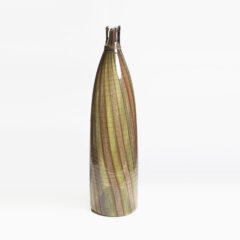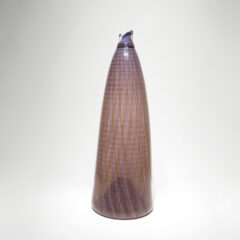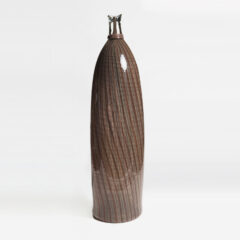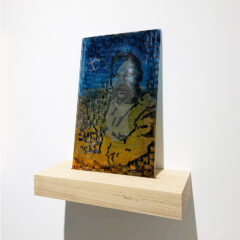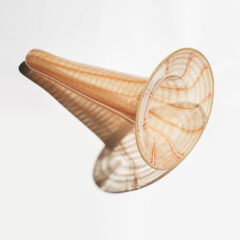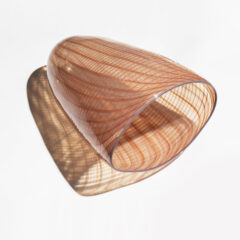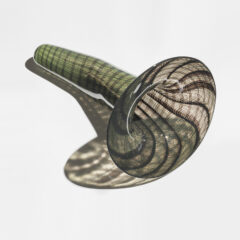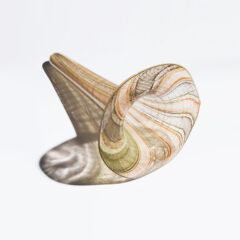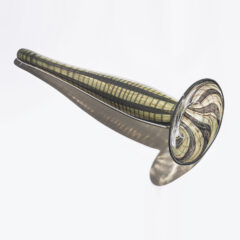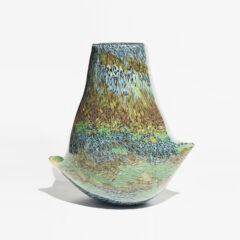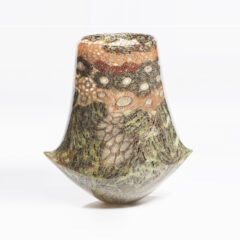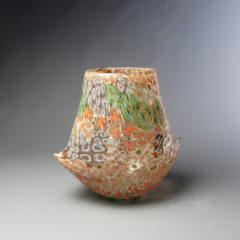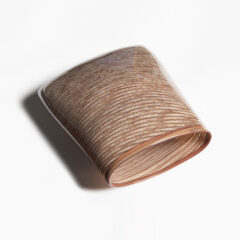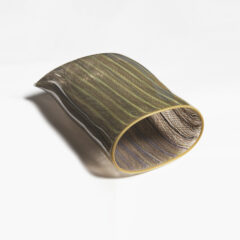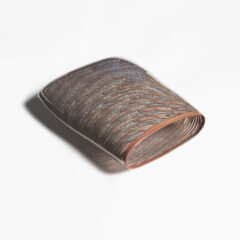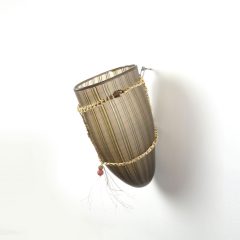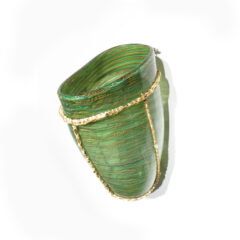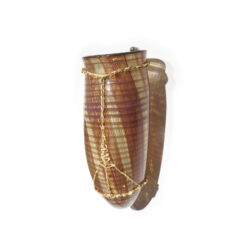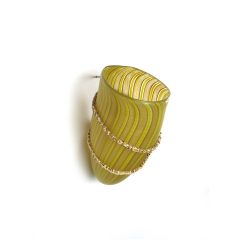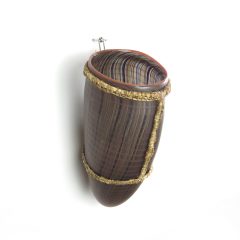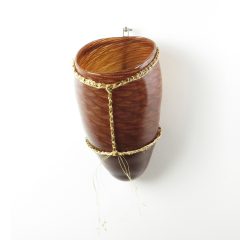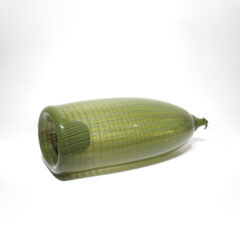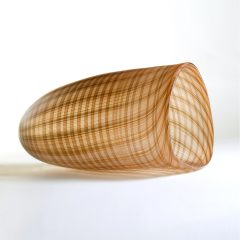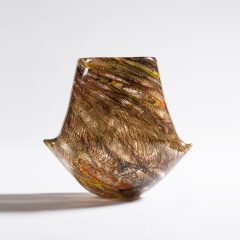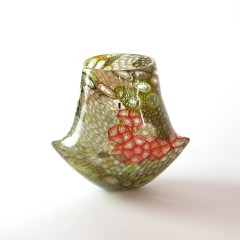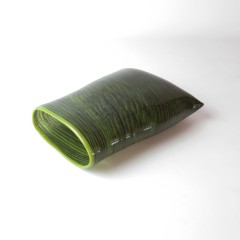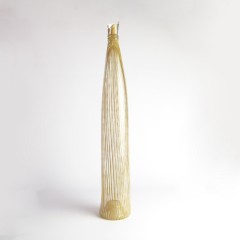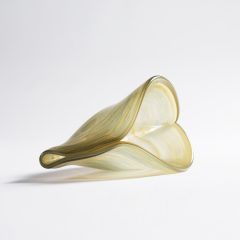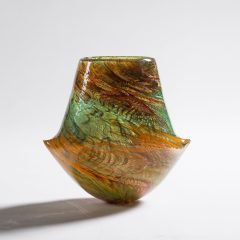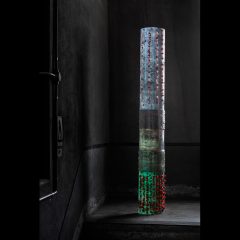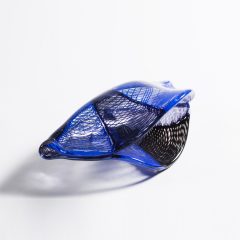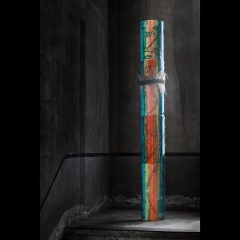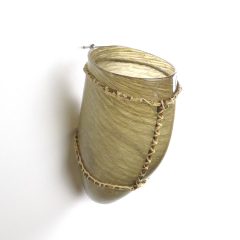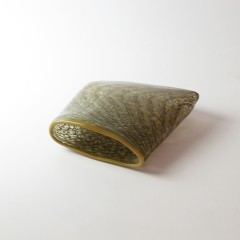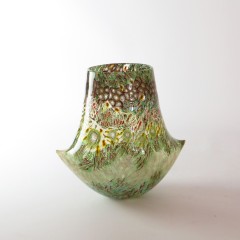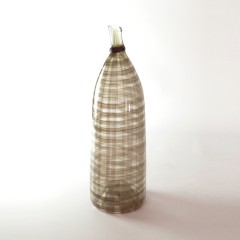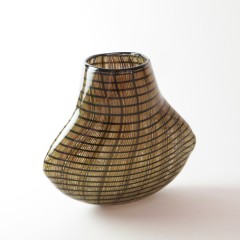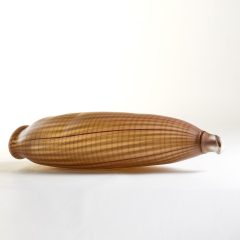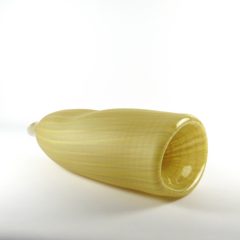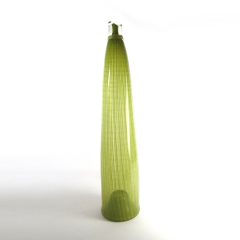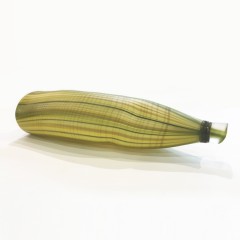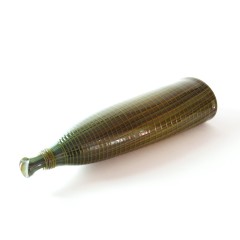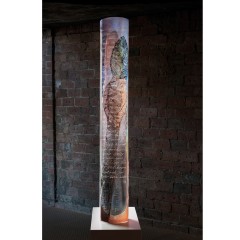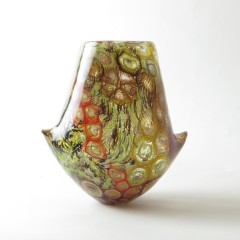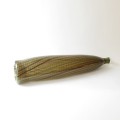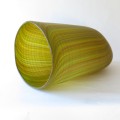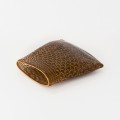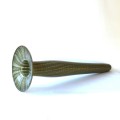Jenni Kemarre Martiniello OAM
Glass Artist, Canberra, Australia
Jenni Kemarre Martiniello’s pieces demonstrate a duality of Indigenous and glass cultures, traditional and contemporary ideologies of strength and fragility, which encompass the warp and weft of time. Of Arrernte (Australian Central Desert), Chinese and Anglo-Celtic descent, Martiniello embraces 60,000 years of Indigenous Australian culture through her identity and the medium of glass. In using glass, a non-traditional medium adapted from centuries-old techniques, to make traditional Indigenous forms, Martiniello explores the relationships between cultures and filters them through her personal relationship to the land.
The European settlement of Australia 230 years ago disrupted Indigenous peoples, their languages, ceremonies and traditional laws, while imposing state and federal control and intervention. Through resistance and resilience, including demands for the recognition of their rights and the reclamation of Indigenous culture,1 Indigenous people are trying to reverse this colonisation. Martiniello recalls seeing Indigenous woven “artifacts” in a museum as a child as if “they were relics from a dead past of extinct cultural practices”2 despite knowing that they were part of living practices. Here a seed was planted for her future artworks. Australia’s colonisation introduced new materials to Indigenous peoples which opened new avenues for creativity. One of these new materials was glass.
Martiniello melds the languages of glass and traditional woven objects to create her own twist on the two art forms. She uses glass to emulate the looping stitches, coils and long weaves of woven vessels such as dilly bags. Dilly bags are used to collect bush foods and medicine. When used in ceremony, dilly bags have varied decorations, such as the type of weave, the placement of feathers and the presence or absence of tassels. Each of these modifications has spiritual meaning and is specific to one clan, or a group of clans that share ceremonial privileges.
Martiniello chooses not to make any specific clan weaves, as these are protected under copyright, intellectual property and communal property rights laws. More importantly for the weavers, they are also subject to traditional Aboriginal law. Only those who “belong” to specific designs through their connection to country, clan or family can use those decorations and Martiniello respects these laws. Unlike paint, glass colours do not mix and blend, and the glass technique known as caneworking is used to form intricate weaving-like patterns. Coloured glass can be twisted, stretched and pulled, and after cooling, can be bundled, stretched and pulled again. This method allows for an infinite combination of colours and patterns that are used to create a final blown glass object that appears woven.
